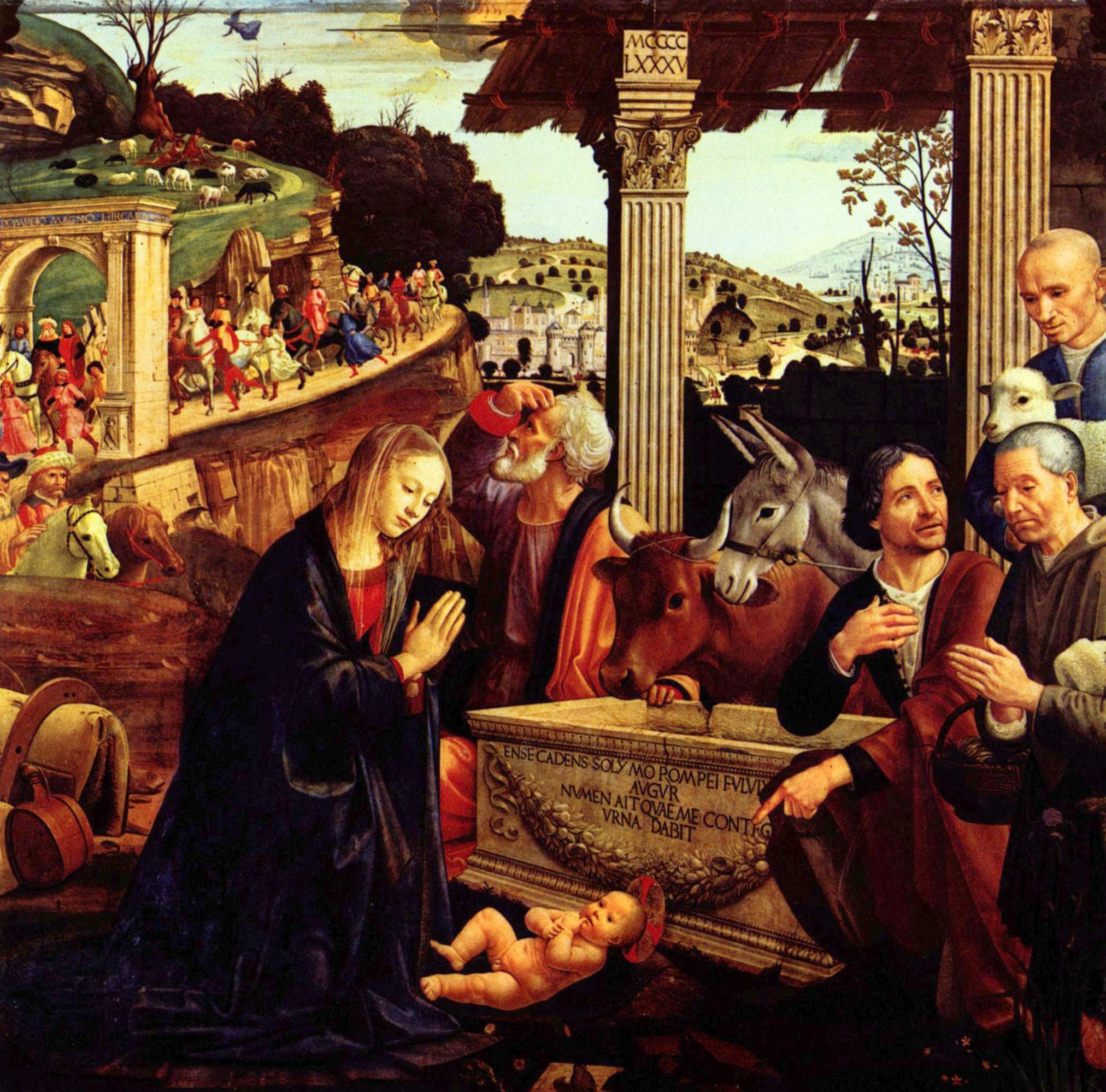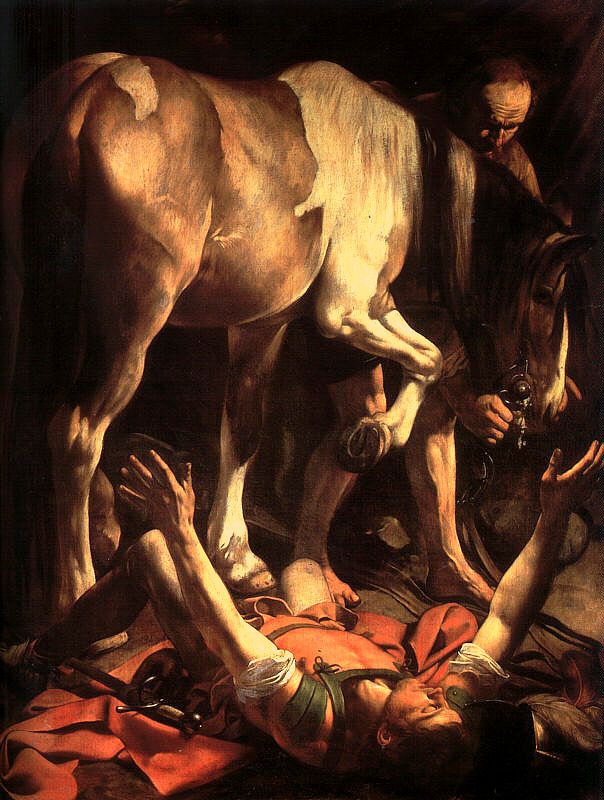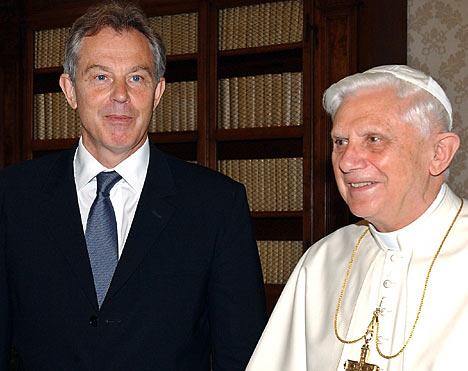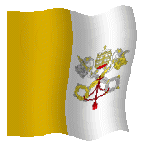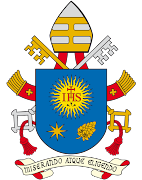 Dear Brothers and Sisters! "A holy day has dawned upon us." A day of great hope: today the Saviour of mankind is born. The birth of a child normally brings a light of hope to those who are waiting anxiously. When Jesus was born in the stable at Bethlehem, a "great light" appeared on earth; a great hope entered the hearts of those who awaited him: in the words of today’s Christmas liturgy, "lux magna". Admittedly it was not "great" in the manner of this world, because the first to see it were only Mary, Joseph and some shepherds, then the Magi, the old man Simeon, the prophetess Anna: those whom God had chosen. Yet, in the shadows and silence of that holy night, a great and inextinguishable light shone forth for every man; the great hope that brings happiness entered into the world: "the Word was made flesh and we saw his glory" (Jn 1:14)."God is light", says Saint John, "and in him is no darkness at all" (1 Jn 1:5). In the Book of Genesis we read that when the universe was created, "the earth was without form and void, and darkness was upon the face of the deep." "God said, ‘Let there be light’; and there was light." (Gen 1:2-3). The creative Word of God – Dabar in Hebrew, Verbum in Latin, Logos in Greek – is Light, the source of life. All things were made through the Logos, not one thing had its being but through him (cf. Jn 1:3). That is why all creatures are fundamentally good and bear within themselves the stamp of God, a spark of his light. Nevertheless, when Jesus was born of the Virgin Mary, the Light himself came into the world: in the words of the Creed, "God from God, Light from Light". In Jesus, God assumed what he was not, while remaining what he was: "omnipotence entered an infant’s body and did not cease to govern the universe" (cf. Saint Augustine, Sermo 184, No. 1 on Christmas). The Creator of man became man in order to bring peace to the world. For this reason, during Christmas night, the hosts of angels sing: "Glory to God in the highest, and peace on earth to those whom he loves" (Lk 2:14)."Today a great light has come upon the earth". The Light of Christ is the bearer of peace. At Midnight Mass, the Eucharistic liturgy begins with this very chant: "Today true peace has come down to us from heaven" (Entrance Antiphon). Indeed, it is only the "great" light manifested in Christ that can give "true" peace to men: that is why every generation is called to welcome it, to welcome the God who in Bethlehem became one of us.This is Christmas – the historical event and the mystery of love, which for more than two thousand years has spoken to men and women of every era and every place. It is the holy day on which the "great light" of Christ shines forth, bearing peace! Certainly, if we are to recognize it, if we are to receive it, faith is needed and humility is needed. The humility of Mary, who believed in the word of the Lord and, bending low over the manger, was the first to adore the fruit of her womb; the humility of Joseph, the just man, who had the courage of faith and preferred to obey God rather than to protect his own reputation; the humility of the shepherds, the poor and anonymous shepherds, who received the proclamation of the heavenly messenger and hastened towards the stable, where they found the new-born child and worshipped him, full of astonishment, praising God (cf. Lk 2:15-20). The little ones, the poor in spirit: they are the key figures of Christmas, in the past and in the present; they have always been the key figures of God’s history, the indefatigable builders of his Kingdom of justice, love and peace.In the silence of that night in Bethlehem, Jesus was born and lovingly welcomed. And now, on this Christmas Day, when the joyful news of his saving birth continues to resound, who is ready to open the doors of his heart to the holy child? Men and women of this modern age, Christ comes also to us bringing his light, he comes also to us granting peace! But who is watching, in the night of doubt and uncertainty, with a vigilant, praying heart? Who is waiting for the dawn of the new day, keeping alight the flame of faith? Who has time to listen to his word and to become enfolded and entranced by his love? Yes! His message of peace is for everyone; he comes to offer himself to all people as sure hope for salvation.Finally, may the light of Christ, which comes to enlighten every human being, shine forth and bring consolation to those who live in the darkness of poverty, injustice and war; to those who are still denied their legitimate aspirations for a more secure existence, for health, education, stable employment, for fuller participation in civil and political responsibilities, free from oppression and protected from conditions that offend against human dignity. It is the most vulnerable members of society – women, children, the elderly – who are so often the victims of brutal armed conflicts, terrorism and violence of every kind, which inflict such terrible sufferings on entire populations. At the same time, ethnic, religious and political tensions, instability, rivalry, disagreements, and all forms of injustice and discrimination are destroying the internal fabric of many countries and embittering international relations. Throughout the world the number of migrants, refugees and evacuees is also increasing because of frequent natural disasters, often caused by alarming environmental upheavals.On this day of peace, my thoughts turn especially to those places where the grim sound of arms continues to reverberate; to the tortured regions of Darfur, Somalia, the north of the Democratic Republic of Congo, the border between Eritrea and Ethiopia; to the whole of the Middle East – especially Iraq, Lebanon and the Holy Land; to Afghanistan, Pakistan and Sri Lanka, to the Balkans and to many other crisis situations that unfortunately are frequently forgotten. May the Child Jesus bring relief to those who are suffering and may he bestow upon political leaders the wisdom and courage to seek and find humane, just and lasting solutions. To the thirst for meaning and value so characteristic of today’s world, to the search for prosperity and peace that marks the lives of all mankind, to the hopes of the poor: Christ – true God and true Man – responds with his Nativity. Neither individuals nor nations should be afraid to recognize and welcome him: with Him "a shining light" brightens the horizon of humanity; in him "a holy day" dawns that knows no sunset. May this Christmas truly be for all people a day of joy, hope and peace!"Come you nations and adore the Lord." With Mary, Joseph and the shepherds, with the Magi and the countless host of humble worshippers of the new-born Child, who down the centuries have welcomed the mystery of Christmas, let us too, brothers and sisters from every continent, allow the light of this day to spread everywhere: may it enter our hearts, may it brighten and warm our homes, may it bring serenity and hope to our cities, and may it give peace to the world. This is my earnest wish for you who are listening. A wish that grows into a humble and trustful prayer to the Child Jesus, that his light will dispel all darkness from your lives and fill you with love and peace. May the Lord, who has made his merciful face to shine in Christ, fill you with his happiness and make you messengers of his goodness. Happy Christmas!
Dear Brothers and Sisters! "A holy day has dawned upon us." A day of great hope: today the Saviour of mankind is born. The birth of a child normally brings a light of hope to those who are waiting anxiously. When Jesus was born in the stable at Bethlehem, a "great light" appeared on earth; a great hope entered the hearts of those who awaited him: in the words of today’s Christmas liturgy, "lux magna". Admittedly it was not "great" in the manner of this world, because the first to see it were only Mary, Joseph and some shepherds, then the Magi, the old man Simeon, the prophetess Anna: those whom God had chosen. Yet, in the shadows and silence of that holy night, a great and inextinguishable light shone forth for every man; the great hope that brings happiness entered into the world: "the Word was made flesh and we saw his glory" (Jn 1:14)."God is light", says Saint John, "and in him is no darkness at all" (1 Jn 1:5). In the Book of Genesis we read that when the universe was created, "the earth was without form and void, and darkness was upon the face of the deep." "God said, ‘Let there be light’; and there was light." (Gen 1:2-3). The creative Word of God – Dabar in Hebrew, Verbum in Latin, Logos in Greek – is Light, the source of life. All things were made through the Logos, not one thing had its being but through him (cf. Jn 1:3). That is why all creatures are fundamentally good and bear within themselves the stamp of God, a spark of his light. Nevertheless, when Jesus was born of the Virgin Mary, the Light himself came into the world: in the words of the Creed, "God from God, Light from Light". In Jesus, God assumed what he was not, while remaining what he was: "omnipotence entered an infant’s body and did not cease to govern the universe" (cf. Saint Augustine, Sermo 184, No. 1 on Christmas). The Creator of man became man in order to bring peace to the world. For this reason, during Christmas night, the hosts of angels sing: "Glory to God in the highest, and peace on earth to those whom he loves" (Lk 2:14)."Today a great light has come upon the earth". The Light of Christ is the bearer of peace. At Midnight Mass, the Eucharistic liturgy begins with this very chant: "Today true peace has come down to us from heaven" (Entrance Antiphon). Indeed, it is only the "great" light manifested in Christ that can give "true" peace to men: that is why every generation is called to welcome it, to welcome the God who in Bethlehem became one of us.This is Christmas – the historical event and the mystery of love, which for more than two thousand years has spoken to men and women of every era and every place. It is the holy day on which the "great light" of Christ shines forth, bearing peace! Certainly, if we are to recognize it, if we are to receive it, faith is needed and humility is needed. The humility of Mary, who believed in the word of the Lord and, bending low over the manger, was the first to adore the fruit of her womb; the humility of Joseph, the just man, who had the courage of faith and preferred to obey God rather than to protect his own reputation; the humility of the shepherds, the poor and anonymous shepherds, who received the proclamation of the heavenly messenger and hastened towards the stable, where they found the new-born child and worshipped him, full of astonishment, praising God (cf. Lk 2:15-20). The little ones, the poor in spirit: they are the key figures of Christmas, in the past and in the present; they have always been the key figures of God’s history, the indefatigable builders of his Kingdom of justice, love and peace.In the silence of that night in Bethlehem, Jesus was born and lovingly welcomed. And now, on this Christmas Day, when the joyful news of his saving birth continues to resound, who is ready to open the doors of his heart to the holy child? Men and women of this modern age, Christ comes also to us bringing his light, he comes also to us granting peace! But who is watching, in the night of doubt and uncertainty, with a vigilant, praying heart? Who is waiting for the dawn of the new day, keeping alight the flame of faith? Who has time to listen to his word and to become enfolded and entranced by his love? Yes! His message of peace is for everyone; he comes to offer himself to all people as sure hope for salvation.Finally, may the light of Christ, which comes to enlighten every human being, shine forth and bring consolation to those who live in the darkness of poverty, injustice and war; to those who are still denied their legitimate aspirations for a more secure existence, for health, education, stable employment, for fuller participation in civil and political responsibilities, free from oppression and protected from conditions that offend against human dignity. It is the most vulnerable members of society – women, children, the elderly – who are so often the victims of brutal armed conflicts, terrorism and violence of every kind, which inflict such terrible sufferings on entire populations. At the same time, ethnic, religious and political tensions, instability, rivalry, disagreements, and all forms of injustice and discrimination are destroying the internal fabric of many countries and embittering international relations. Throughout the world the number of migrants, refugees and evacuees is also increasing because of frequent natural disasters, often caused by alarming environmental upheavals.On this day of peace, my thoughts turn especially to those places where the grim sound of arms continues to reverberate; to the tortured regions of Darfur, Somalia, the north of the Democratic Republic of Congo, the border between Eritrea and Ethiopia; to the whole of the Middle East – especially Iraq, Lebanon and the Holy Land; to Afghanistan, Pakistan and Sri Lanka, to the Balkans and to many other crisis situations that unfortunately are frequently forgotten. May the Child Jesus bring relief to those who are suffering and may he bestow upon political leaders the wisdom and courage to seek and find humane, just and lasting solutions. To the thirst for meaning and value so characteristic of today’s world, to the search for prosperity and peace that marks the lives of all mankind, to the hopes of the poor: Christ – true God and true Man – responds with his Nativity. Neither individuals nor nations should be afraid to recognize and welcome him: with Him "a shining light" brightens the horizon of humanity; in him "a holy day" dawns that knows no sunset. May this Christmas truly be for all people a day of joy, hope and peace!"Come you nations and adore the Lord." With Mary, Joseph and the shepherds, with the Magi and the countless host of humble worshippers of the new-born Child, who down the centuries have welcomed the mystery of Christmas, let us too, brothers and sisters from every continent, allow the light of this day to spread everywhere: may it enter our hearts, may it brighten and warm our homes, may it bring serenity and hope to our cities, and may it give peace to the world. This is my earnest wish for you who are listening. A wish that grows into a humble and trustful prayer to the Child Jesus, that his light will dispel all darkness from your lives and fill you with love and peace. May the Lord, who has made his merciful face to shine in Christ, fill you with his happiness and make you messengers of his goodness. Happy Christmas! 

